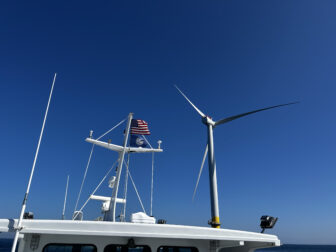By Jennifer Kunze, 2015 Healthy Communities Organizing Fellow, jenniferk@chesapeakeclimate.org.
When you hear the words “Fair Development,” what comes to mind? Good jobs at living wages? Affordable housing? Resident-driven decision-making? Local control of the local economy? Positive impacts on public health? Green infrastructure without pollution?
Saturday, January 17th, over one hundred people gathered in the South Baltimore neighborhood of Curtis Bay for the United Workers‘ Fair Development Strategic Dialogue. Housing, healthcare, and environmental advocates got to exchange news, share ideas, and learn more about possibilities for making Baltimore a more just, healthy, and sustainable city. Meeting at Benjamin Franklin High School, where students have been fighting for years to prevent the country’s second-largest trash incinerator from being built less than a mile away, gave the Dialogue a sense of urgency: decisions made about this facility in the next six months will impact the homes, health, and environment of Curtis Bay residents and people across Baltimore City.
Energy Answers International proposed to build a ‘waste-to-energy’ facility in the Fairfield section of Curtis Bay nearly five years ago. This trash incinerator, which would draw over 230 trash trucks per day, will emit pollutants such as mercury, NOx, lead, dioxins, and particulate matter, creating tremendous health risks for residents of Curtis Bay and all of Baltimore. When students at Benjamin Franklin High learned of the project a few years ago, they organized and began to fight, forming a group they named “Free Your Voice.”

Right now, Free Your Voice is working to get public institutions to cancel their contracts with Energy Answers, including Baltimore City Schools, the Baltimore Museum of Art, and the Walters Art Museum. Free Your Voice asked Dialogue attendees to share or send their “Pledge to Divest” logo, a sunflower, to the BMA and the Walters. To pledge your support, go here.
Free Your Voice holds the Fairfield Incinerator as an example of failed development: a project, planned without the consent or input of the affected communities, that will hurt, rather than help the surrounding neighborhoods. To learn more about Fair Development, I attended a discussion within the “Clean Air is a Human Right” track about alternative sources of energy and alternative uses of the Fairfield site. Residents of Curtis Bay are eager to pursue building a solar farm on the site instead, which could create good jobs for residents of the neighborhood, provide a positive example of brownfield development for other cities, and help Baltimore City reach its goal of 22 megawatts of green energy produced in the city by 2020. Within discussion about the practicalities and feasibility of the project, John Duda of Red Emma’s and the Democracy Collaborative spoke about infusing green development with just economic development. A solar farm designed, built, and maintained by existing out-of-state solar companies would address the pollution and energy injustices of the proposed incinerator, but would do little to address the disinvestment and lack of economic opportunity seen in Curtis Bay and throughout Baltimore. But if it integrated the green energy proposal with education, jobs training, and the development of democratic economic models, the solar farm proposal would be a part of fair development aimed at making South Baltimore a more just, sustainable, and healthy place.
Scheduled for the Saturday before Martin Luther King, Jr., Day, the Fair Development Strategic Dialogue was centered around a famous quote, part of a sermon given by Dr. King on the Sunday before his assassination while in Memphis to support the sanitation workers’ strike:
“A true revolution of values,” he said, “will soon cause us to question the fairness and justice of many of our past and present policies. [True compassion] comes to see that an edifice which produces beggars needs restructuring.”

Between Curtis Bay and my home in West Baltimore is Middle Branch Park, a narrow stretch of deserted green space along the southern shore of the Patapsco River. Quiet and deserted, surrounded by marshes but with a view of the city skyline, this is one of my favorite parks in Baltimore, and so on my way home after the Dialogue, I stopped to take a walk. From one end of the path, the medical waste incinerator already built in Curtis Bay could be seen; from the other, the smokestack of Baltimore’s existing Wheelabrator trash incinerator rose next to M&T Bank Stadium.
Just as the Jericho Road must be transformed to end the dangers posed to its travelers, our economy must be transformed to end the dangers posed to the people living, working, and breathing in it. An energy edifice which forces health-endangering and climate-changing industries on areas like South Baltimore needs restructuring. To contribute to that change, share the Pledge to Divest with the Walters and the BMA on Facebook, and tune in to Free Your Voice and United Workers for more.





